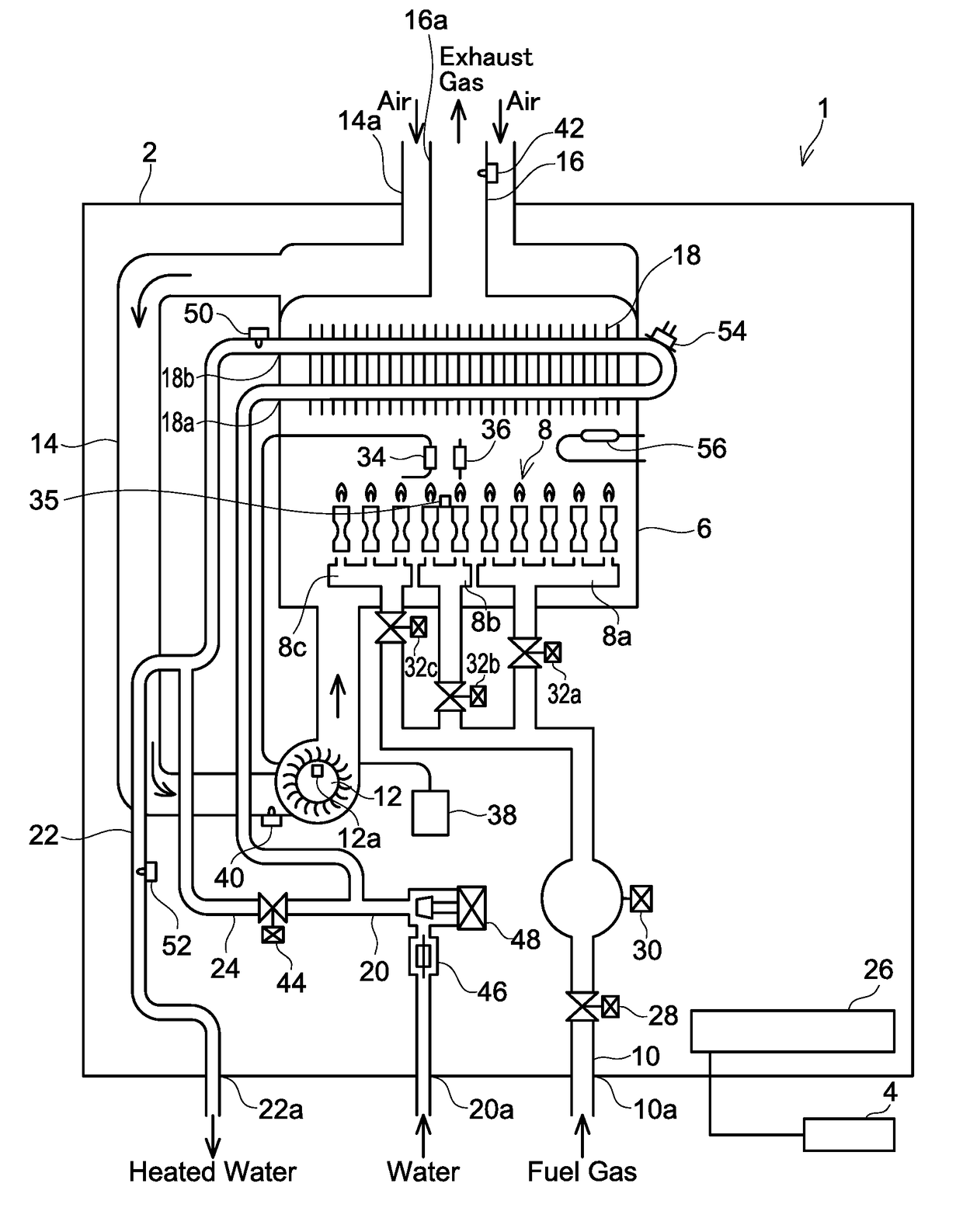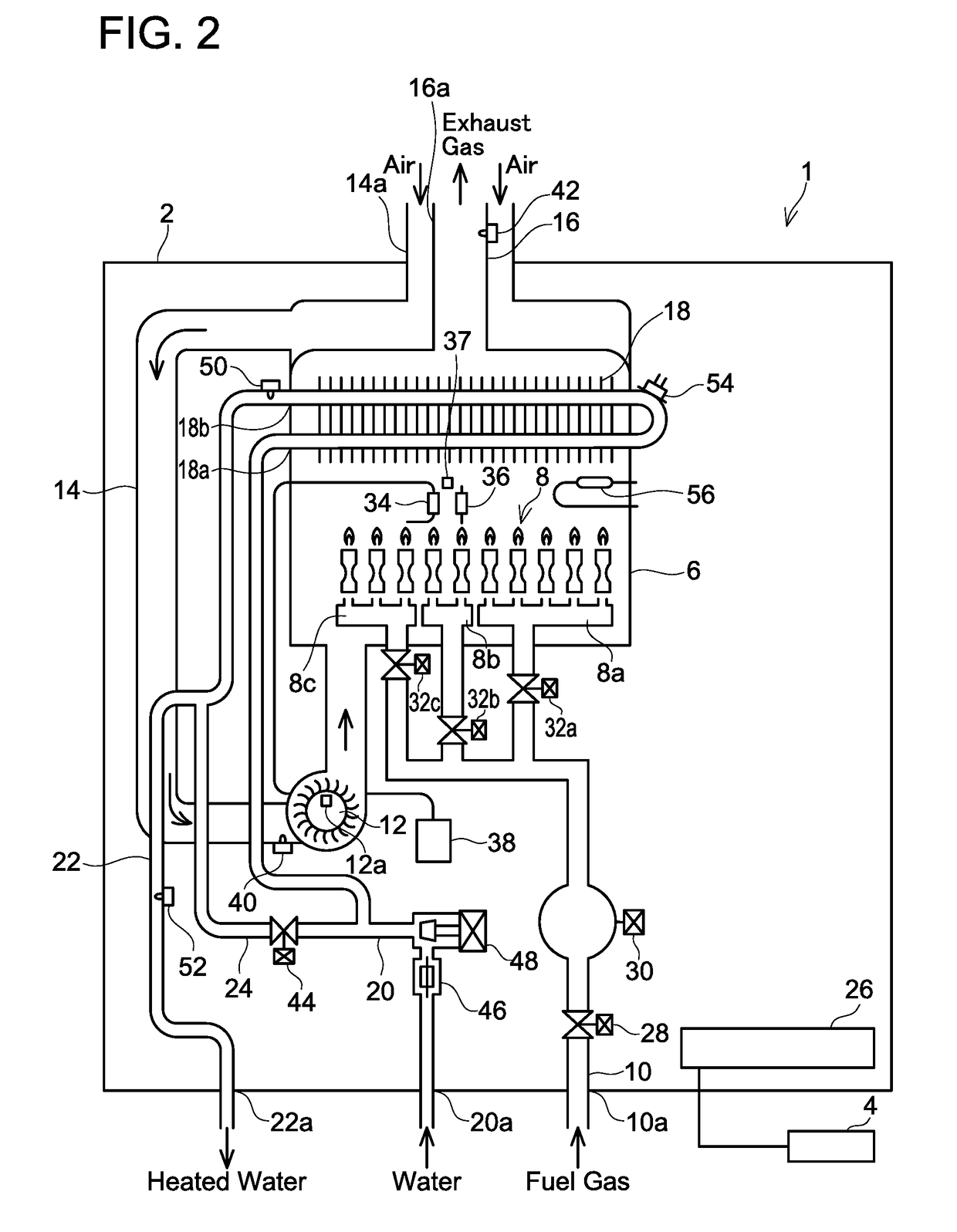Combustion type water heater
a water heater and combustion technology, applied in indirect heat exchangers, heating types, lighting and heating apparatuses, etc., can solve the problems of increasing product size and manufacturing costs, increasing exhaust gas temperature, and increasing exhaust gas temperatur
- Summary
- Abstract
- Description
- Claims
- Application Information
AI Technical Summary
Benefits of technology
Problems solved by technology
Method used
Image
Examples
Embodiment Construction
[0021]As shown in FIG. 1, a water heater 1 of an embodiment of a combustion type water heater comprises a water heater body 2, and a remote controller 4 for remotely controlling the water heater body 2. The water heater body 2 primarily includes a combustion chamber 6, a burner 8, a fuel gas supply pipe 10, a fan 12, an air supply pipe 14, an exhaust pipe 16, a heat exchanger 18, a water input pipe 20, a heated water output pipe 22, a bypass pipe 24, and a controller 26.
[0022]The burner 8 and the heat exchanger 18 are arranged inside the combustion chamber 6. The heat exchanger 18 is arranged above the burner 8. The burner 8 of the present embodiment is an all-primary air burner. In another embodiment, the burner 8 may be a Bunsen burner. The burner 8 is composed of three combustion sections with different combustion amounts (namely a first combustion section 8a, a second combustion section 8b, and a third combustion section 8c), and plural levels of combustion amount ranges can be ...
PUM
 Login to View More
Login to View More Abstract
Description
Claims
Application Information
 Login to View More
Login to View More - R&D
- Intellectual Property
- Life Sciences
- Materials
- Tech Scout
- Unparalleled Data Quality
- Higher Quality Content
- 60% Fewer Hallucinations
Browse by: Latest US Patents, China's latest patents, Technical Efficacy Thesaurus, Application Domain, Technology Topic, Popular Technical Reports.
© 2025 PatSnap. All rights reserved.Legal|Privacy policy|Modern Slavery Act Transparency Statement|Sitemap|About US| Contact US: help@patsnap.com



